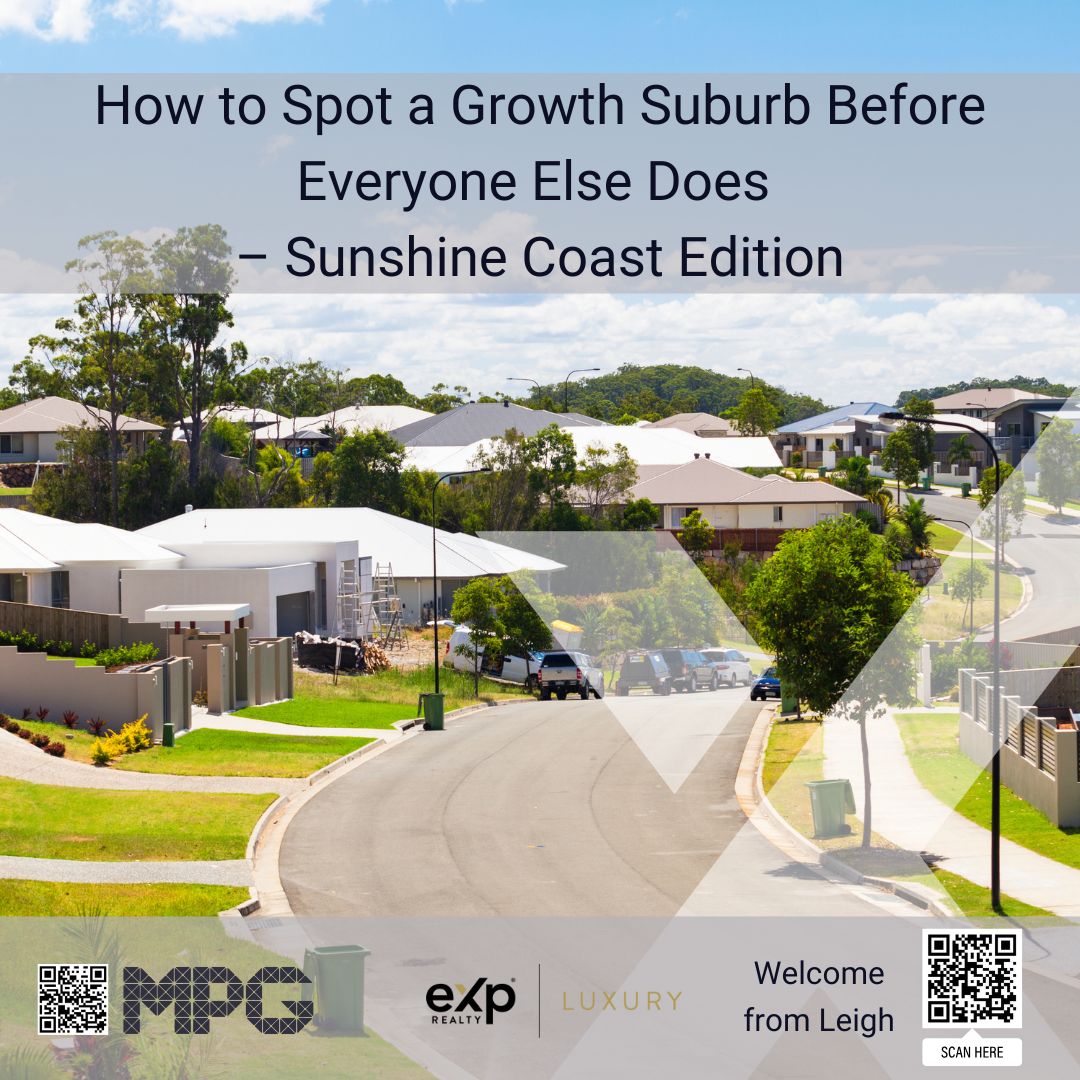Exploring Australia’s Property Landscape: An Insightful Outlook
Weekly Real Estate Market Update with Leigh Martinuzzi MPG
This week I came across an intriguing chart courtesy of Matusik. This chart offers a magnified view of property price trends spanning 30 years. One standout revelation: the average time span between peaks hovers at approximately 4 years. More fascinating still, on average, property prices tend to double every 13 years. Recent market behaviour suggests that these peak intervals have been compressing, a phenomenon Matusik attributes to the swift propagation of news in our media-driven age. Furthermore, the annual growth rate for homes in Australia averages a commendable 5.4%. This data certainly underscores the old wisdom that the prime time to acquire property was yesterday, with today being the next best opportunity.

Shifting our focus to the current market conditions, the Sunshine Coast boasts a bustling property scene. While not excessively cutthroat, the present competition is notably lively. This balance is maintained by well-maintained properties finding buyers within weeks, a testament to the region’s overall vibrancy. On the flip side, certain homes languish on the market for months or even withdraw due to lacklustre offers. It’s a diverse market, with buyers remaining astute to pricing trends, cautiously avoiding overpaying in a market transitioning amid higher interest rates.
Of particular interest is my conviction that property prices on the Sunshine Coast could experience a very slight dip but more likely have seen the bottom and now ready for a rebound. Given the limited supply, there’s a considerable chance that a new peak could be attained in the coming years.
Turning our attention to macroeconomic factors, let’s discuss inflation and interest rates. These metrics appear to have reached their zeniths, potentially kindling enhanced confidence among buyers and sellers. Information from Michael Yardney’s report highlights a 7.7% reduction in building approvals for new homes in June, alongside a more pronounced 21% drop in unit approvals. Despite a slight decline in construction costs, the cumulative expenses remain relatively elevated, which may hinder new construction endeavours for a period.
Parallel to this, land values have surged significantly. Between 2020 and 2023, land values escalated by a substantial 23%. When merged with the costs associated with new builds, it’s evident that the prices of house and land packages will retain their loftiness. Consequently, prospective buyers may incline towards existing homes, considering their comparative affordability.
A valuable insight from Dr. Wilson at MyHousingMarket unveils a 17.1% year-on-year decline in new lending approvals for this year in contrast to the previous year. Concurrently, homes changing ownership without home loans are on the rise. Notably, cash buyers are asserting their influence, with Queensland recording a remarkable 27.8% rise in cash purchases this year. These indicators collectively underscore robust demand and the probable persistence of supply limitations in the years ahead.
Lastly, let’s touch upon the rising mortgage rates. While there may be some impact on certain homeowners, I predict that the market won’t be substantially perturbed by the anticipated distressed sales. Although some properties might change hands below market value, the overall market impact is likely to remain contained.
In conclusion, the property market presents a fascinating amalgamation of historical trends, numerical data, and real-world dynamics. From past price oscillations to the current milieu and the hints of what’s to come, this is a market with a dynamic pulse. Whether you anchor your decisions in data or intuit the rhythm of supply and demand, this could indeed be the moment worth contemplating. After all, seizing the opportunity today might just be the wisest move.





